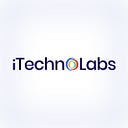Wearable App Development: Features, Applications, Development Process
Long gone is the time when only humans were considered smart. Today, gadgets, devices, and even apps are smart. And, among these smart apps, there are advanced apps known as wearable apps. These are the face of today’s modern world and are widely used by users in every corner of the world.
No matter if you consider the young user base, users in their late 30s and 40s, and even kids, wearable apps are leveraged and preferred by all types of users. But, what are wearable apps that have such a wide audience?
What are Wearable Apps?
Said to be an extension of mobile apps, wearable apps are a level smarter. These can be integrated with wearable objects such as rings, wristwatches, and even wristbands. Depending on the type of programming, these apps can help monitor health vitals, access complete mobile functions from a watch, and also keep a check on physical activity through a ring. This all depends on the type of object your wearable app is integrated with or the type of monitoring it is programmed to do!
Wearable app development process helps build wearable apps which can be integrated with the right hardware such as wristwatches. As wristwatches have smaller screens compared to mobile devices, these apps are developed in such a way as to precisely deliver the UI & UX!
These are becoming common these days. Though smartwatches are most common among these, smart rings and wristbands are also on the way to acquiring a large market size. These are appreciated by a range of markets. Let’s comprehend the potential of wearable app development in detail!
Scope of Wearable App Development
Today, wearable apps are embraced by a range of industries. Be it the ones that are monitored by humans all along, or industries with different levels of automation, wearable app technology is slowly making its way into all industries. Let’s discuss its scope in different sectors-
1. Healthcare
The scope of wearable app development in healthcare and fitness is the most talked about. This technology can help and is helping develop apps and smartwatches, and wristbands that can monitor critical health vitals. Oxygen, body temperature, stress levels, calorie count, steps, and so forth.
Wearable app technology is extensively used today as it can help patients monitor their health and reach medical assistance when they feel their health vitals are in the expected range. But, this has challenges! As the medical field is always critical, the wearable apps that monitor these have to be precise and should meet healthcare standards that ensure its precision, accuracy, and real-time monitoring. Failing at any of these can push businesses into real trouble! And, the damage and risk to human health are also unrepairable!
2. GPS
People depend on their wearables for navigation a lot. As these wearables often get integrated with mobile devices, people get help from navigation and get direction alerts, route information, and whatnot through their wearables!
Along with these, some transportation and navigation apps like google apps can easily be integrated with these wearables apps. This provides users with an integrated and better navigation experience.
3. Messaging
No one wants to miss any messages these days. And, oftentimes when we are busy, we tend to miss important messages as we are away from mobiles or unable to reach messages regularly. Wearable apps fill the gaps. These can send alerts, and even allow easy access to messages through smartwatch screens without even reaching the phone directly. This also allows users to reply to these messages easily!
Apart from these, industries like entertainment and fitness also leverage wearable app development. But, the real challenge is to develop a wearable app that is precise and meets industry standards, and matches users’ expectations.
Read more about Wearable App Development
